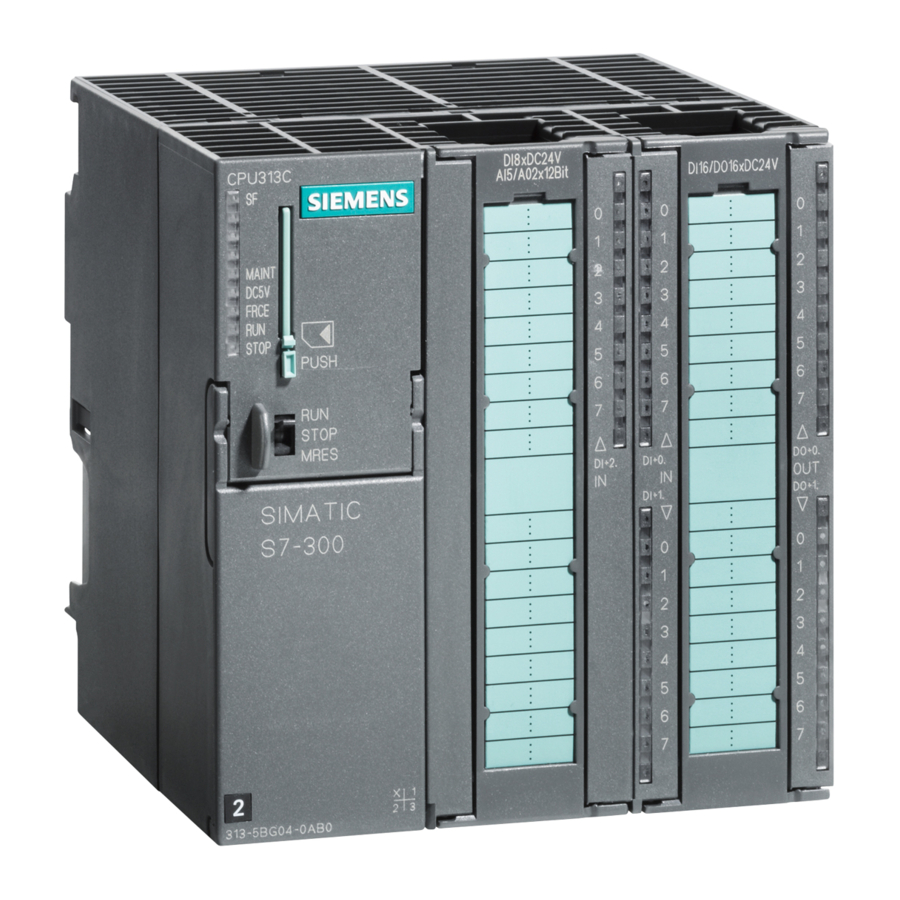
Siemens SIMATIC S7-300 Manual
Sending and receiving sms messages via serial cps and the md720-3 gprs/gsm modem
Hide thumbs
Also See for SIMATIC S7-300:
- User manual ,
- Manual (676 pages) ,
- Reference manual (574 pages)

















Need help?
Do you have a question about the SIMATIC S7-300 and is the answer not in the manual?
Questions and answers